Headphone measurement
As we test, we have already explained in the basic article "Gaming Headsets: Myth, Truth and How we Test" very detailed and transparent, because with the usual audio-swirl of bass thunderstorms and high-pitched whips you can't really get any further. You have to be able to listen subjectively well and measure at the same time. Let's start with the latter, where we first operate the headset on the reference amplifier.
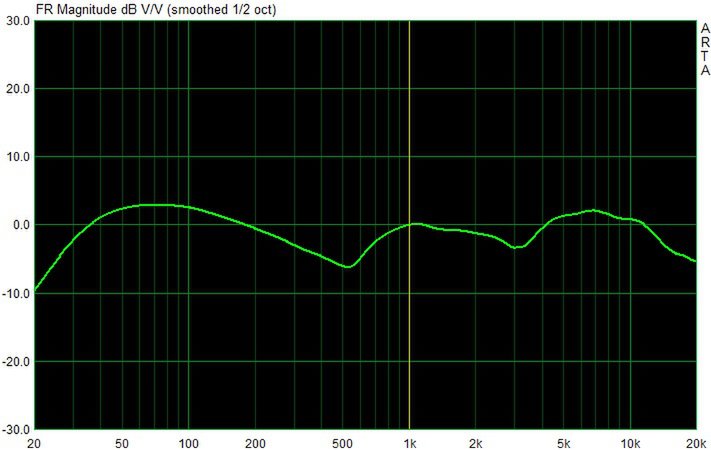
If you look at the original curve, it looks at approx. 520 Hz not bad. As with the Corsair HS50, we would charge this dent to the driver and an unstable impedance curve, because the higher the source's initial resistance, the more stark the dent became. Here, the impedance of the driver should be already well above the 32 ohms, which leads to an audible, partial level drop. However, this level can be compensated with the equalizer (EQ).
The four fixed sound profiles of the Solox F30
Now let's move on to the included headphone amplifier. Unfortunately, one of the four fixed sound profiles is always active. Even the software-side activation of the equalizer can NOT override these profiles, but can only change them additionally as a kind of offset! We consider this to be a design error, because it simply makes no sense. To prove the whole thing, we switch on or switch on the equalizer. and then measure the four stored profiles.
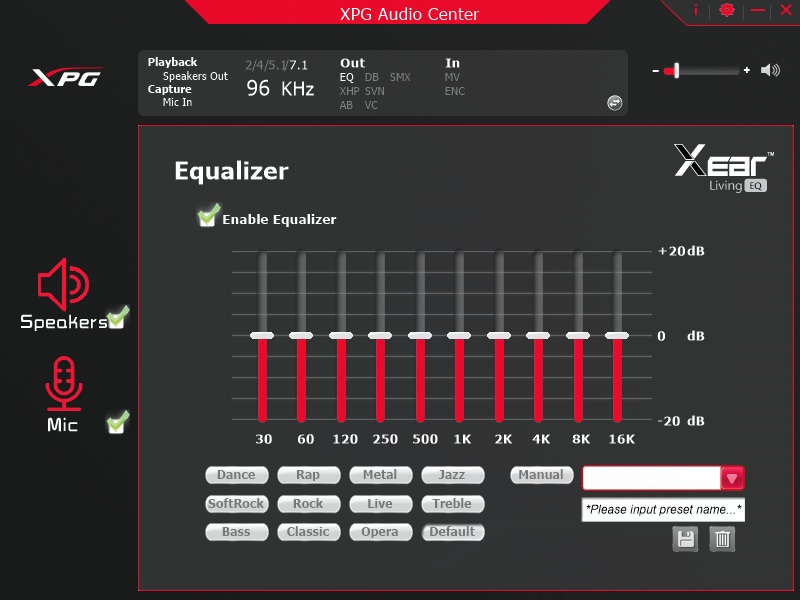
However, the results with and without flat position of the controllers were always the same! If you want to use the EQ yourself, the following four curves offer a good overview of the acoustic starting position. We would use the settings "Voice" or, if necessary, "Music" for our own sound experiments purely subjectively, while "Gaming" is too bass-heavy and "Cinema" is far too high-emphasized.
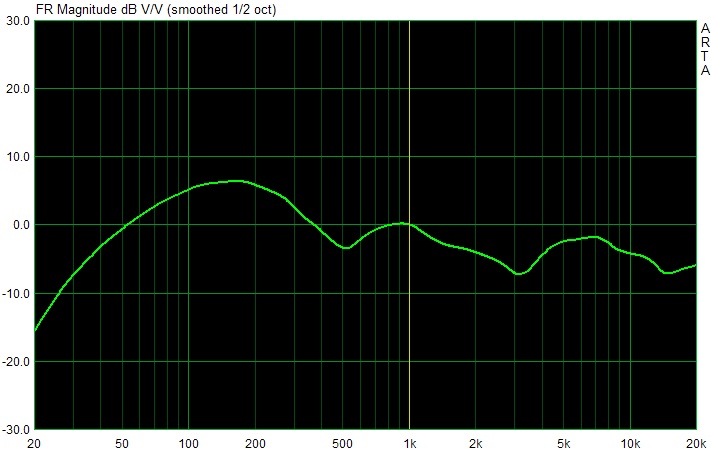 Amp-Preset: Gaming Amp-Preset: Gaming |
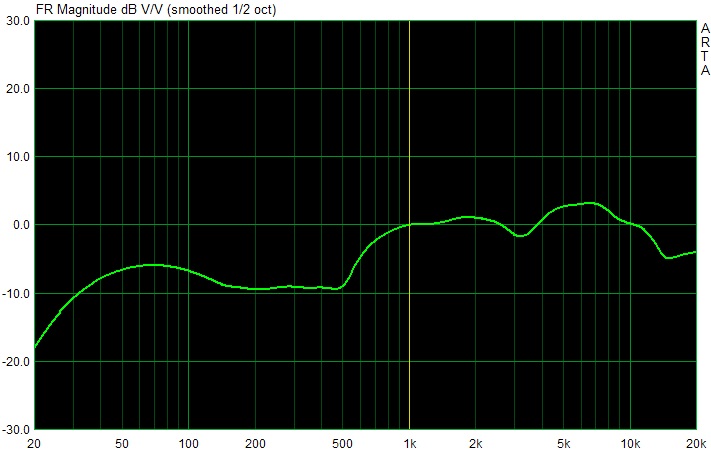 Amp-Preset: Voice Amp-Preset: Voice |
With "Voice" the 520 Hz-Delle could still be ironed away and if necessary you could also raise the bass and the high tone a bit to get a more balanced sound. However, one should not expect too much from the system, especially since the software fakes real 10 channels, even though the C-Media chip actually only masters five channels, but the whole thing can only be achieved by interpolating the controller position.
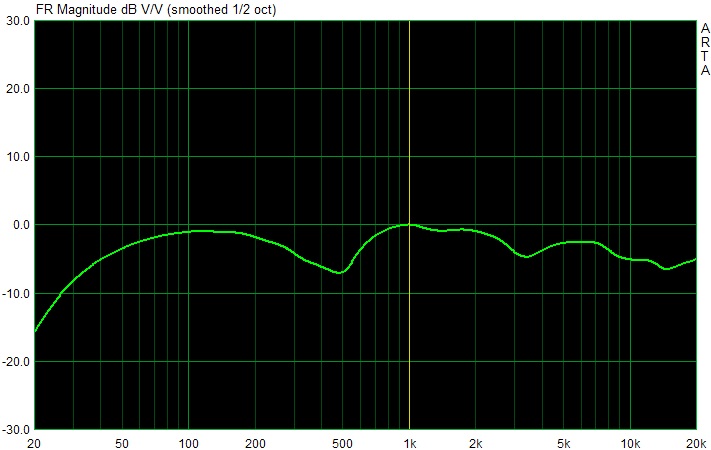 Amp-Preset: Cinema Amp-Preset: Cinema |
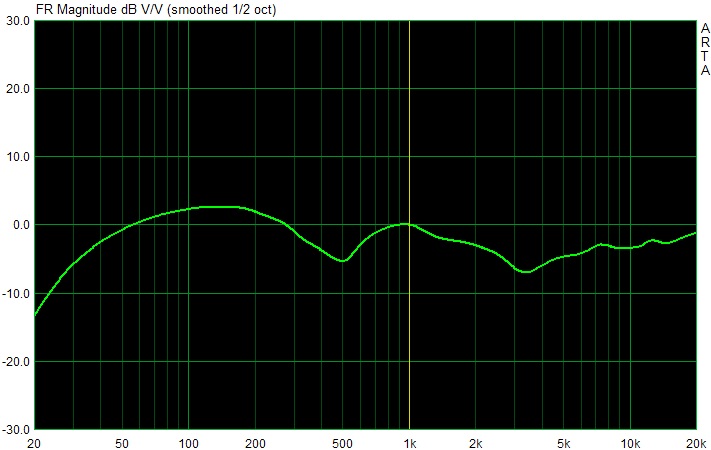 Amp-Preset: Music Amp-Preset: Music |
We have already described how abstruse the given EQ settings are. Here, the aim is to show what Asians associate in "Classic": a bass and high-altitude roller coaster ride without double fuse and airbag. Not only does that not sound, it causes numbness and dizziness. Please do not imitate.
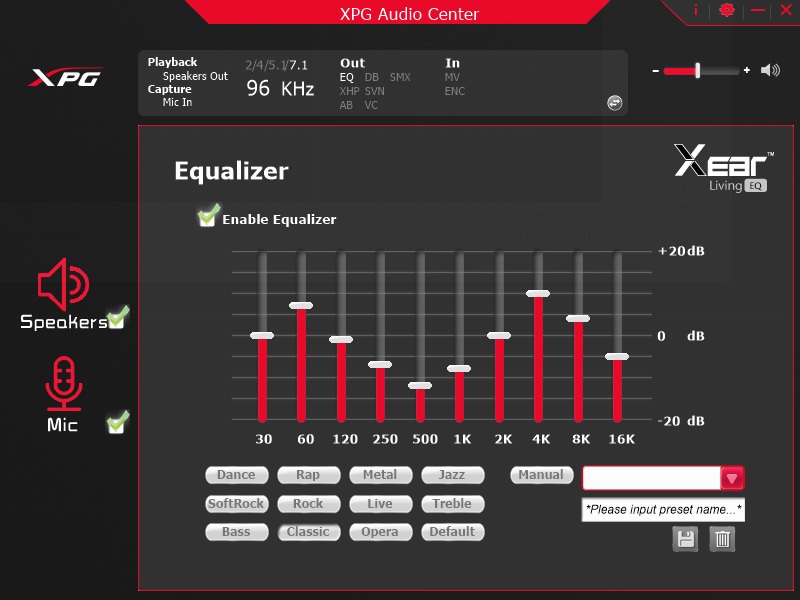 |
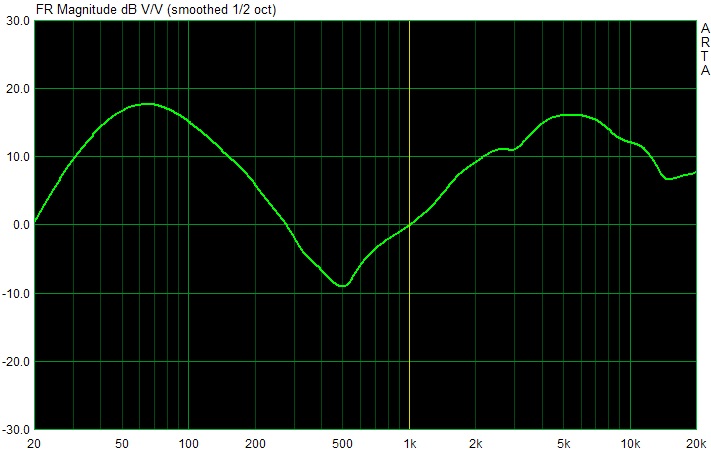 |
Subjective listening experience – Original against optimization
Bass
Test the lowest bass in the subcontraoctave (16.4 Hz to 32.7 Hz) with a recording of Bach's Toccata and Fugue in D minor (19 and 25 Hz) and the Festival Overture 1812 by Tchaikovsky (10 Hz and 12.5 Hz). The same applies to the lower ranges of the contraoctothe (32.7 to 65.4 Hz). The big bass drum (kick drum), which in the U-music is a welcome companion and usually on approx. 55 to 60 Hz, this assessment will then be rounded off.
The low(st)bass, despite slight level drop below approx. 40 Hz, still presence and even a very good resolution. The settling behavior is quite good, even on the Solox F30. The subcontraoctave is audible, which is not self-evident. But even above, the battle situation is not really distressing.
Despite the rather soft design of the system, the large bass drum still comes over quite crisp and the level strength is right with short but dominant impulses. Very deeply tuned bass guitars can become an acoustic pleasure, if you don't overdo the general bass increase. At least we could neither measure nor hear annoying resonances.
The upper bass up to 150 Hz, in which also the Great Octave (65.4 to 130.8 Hz) is located, houses the basic language frequency of the male voice and decides very strongly on the true-to-life reproduction of male vocals.
This area sounds balanced and natural, albeit somewhat greased. The male vocals are played very rich and warm, the instruments are hardly distorted. Overall, the resolution is acceptable and does not allow sources that are too dominant to perform well and even locate them. Of course, this is all still miles away from an analytical sound, but at least warms ears and hearts in winter.
Frequency range
The lower middles (also basic tone range) are approx. 150 to 400 Hz. Together with the already mentioned upper bass, this area plays a very important role for the subjectively perceived heat or bass. Fullness of the sound. The basic language frequency of female voices can be found in this area.
Female vocals are still acceptable. The timbre of the vocals and recorded instruments stays nicely warm and full at first, but is already slightly lower upwards. Here you can slowly hear the sloping flanks of impedance cellulitis with their ugly dent on the acoustic thigh.
The upper mids between 400 Hz and about two KHz contain a mark at a KHz, which is still considered a reference for many measurements. Unfortunately, this is often noticeable with cheaper devices, as manufacturers often try to overemphasize this frequency. This area does not play an insignificant role in gaming either, and balanced playback contributes significantly to good spatial resolution.
The drama is about. 500 Hz. Without tutoring at the equalizer, many instruments lack important nuances and the resolution also suffers audibly. Many details are blurred or go down a little bit. The stage and the subjectively perceived quality of the spatial resolution are usable, but only after our small intervention at a quite good level. So it is definitely worth fattening a little bit at 500 Hz.
A large orchestra seems positioned far enough, even if individual, rather quieter sources cannot always be located with real determination. There are no real hi-fi headphones, of course, even due to manual improvements to the EQ. You have to be aware of that. But for the average listener, and especially for gamers, the bidding is enough.
High-pitched range
Between two and about 3.5 KHz, human hearing is most sensitive, especially since this area of the lower heights is responsible for the good overtone reproduction of the human voice. This frequency range is crucial for the recognition of a voice or instrument; in this context, one also speaks of the respective timbre.
The location in the game is now at the height of the action at all times, there is no complaining, even if a small drop in the level disturbs us again. But that's mockery at a higher level. Spatiality is possible even without the additional 7.1-paste, which must be admitted to the headset at this point. Also the music reproduction weakens only a little and we have heard it all much worse. Here, the curve looks even more dramatic visually than it actually sounds later.
The middle heights (3.5 to six KHz) decide on the sound or failure of the speech reproduction as a whole, because the S- and hissing (Sibilants) fall into this range. The upper heights then reach up to approx. ten KHz to move into the super high tone.
High and super high tone are very pronounced without overburdening. Nothing drifts into the metallic and lace, over-concrete sibilants and blow-out noises are not an issue. The resolution is good to very good and also appropriate to the final price. The onset of light level drop from approx. 12 KHz is due to the sofa-like ear pads including positioning, there could certainly be some further optimized.
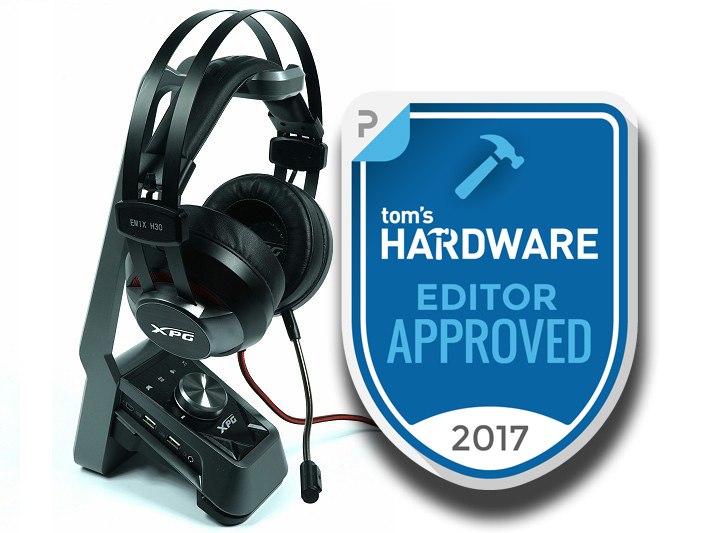
Summary
Well, we are a little divided. On the one hand, you get a whole box full of features, but you don't really need most of it. The widely used sound solution of C-Media as such is not something that would make the headset unique. This works rather via the basic concept with the stable stand and the separate headphone amplifier, which even uses the line-out of the C-Media chip and a real conversion or change. switch-off of an optionally connectable loudspeaker system.
We have already described our opinion on the virtual surround in detail in the basic article. In this respect, this solution is no different from what we discussed there. If you believe in it and imagine that you can hear more spatially, you are welcome to use this feature. However, it is not sound-enhancing, on the contrary. But then you will have to live with that.
Soundfully, the XPG Emix H30 is fine, even if it doesn't offer hi-fi enjoyment. Well suited for gaming and for the music in between. If you don't overdo it with the EQ, but patch the acoustic hole at 520 Hz, you can sit back and relax. Because then the two drivers play quite neatly. Even loudly, which should not be unimportant to some potential buyers.
































Kommentieren